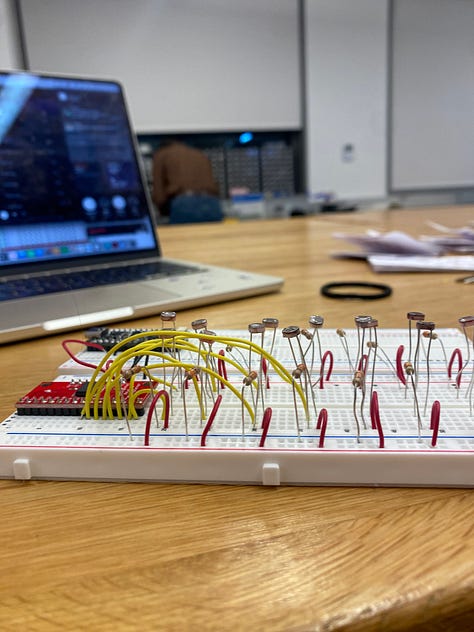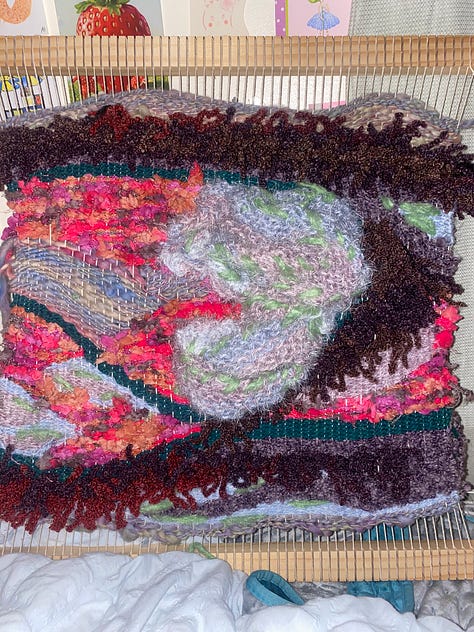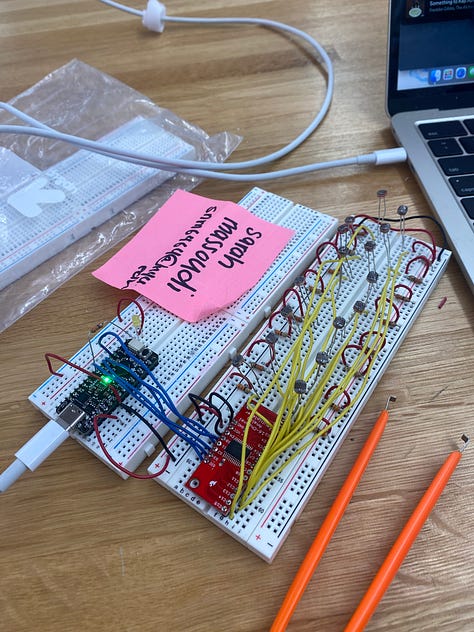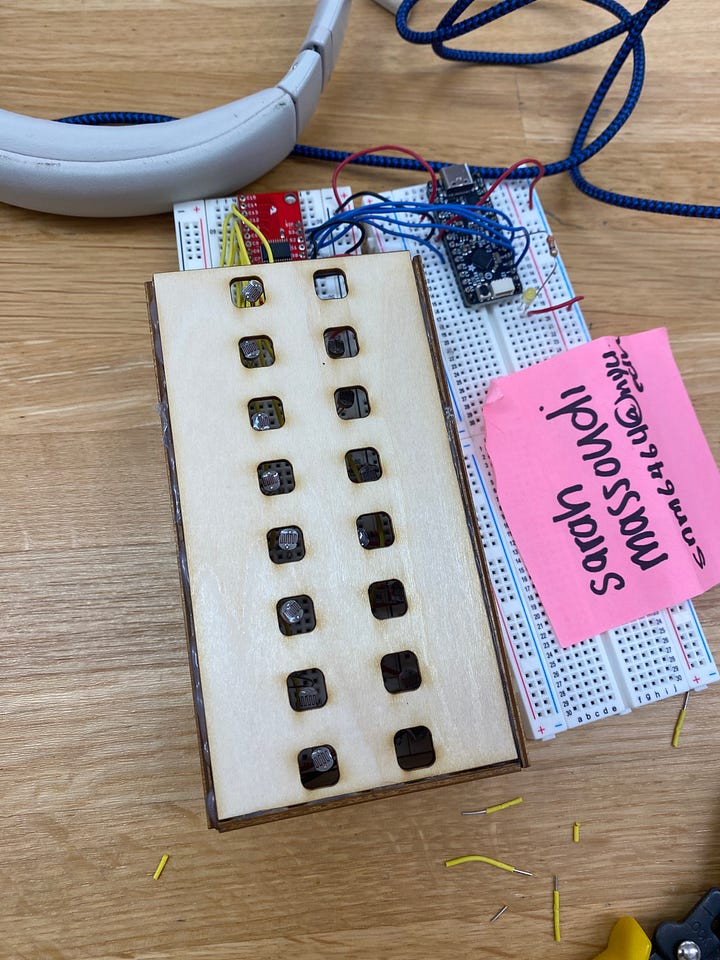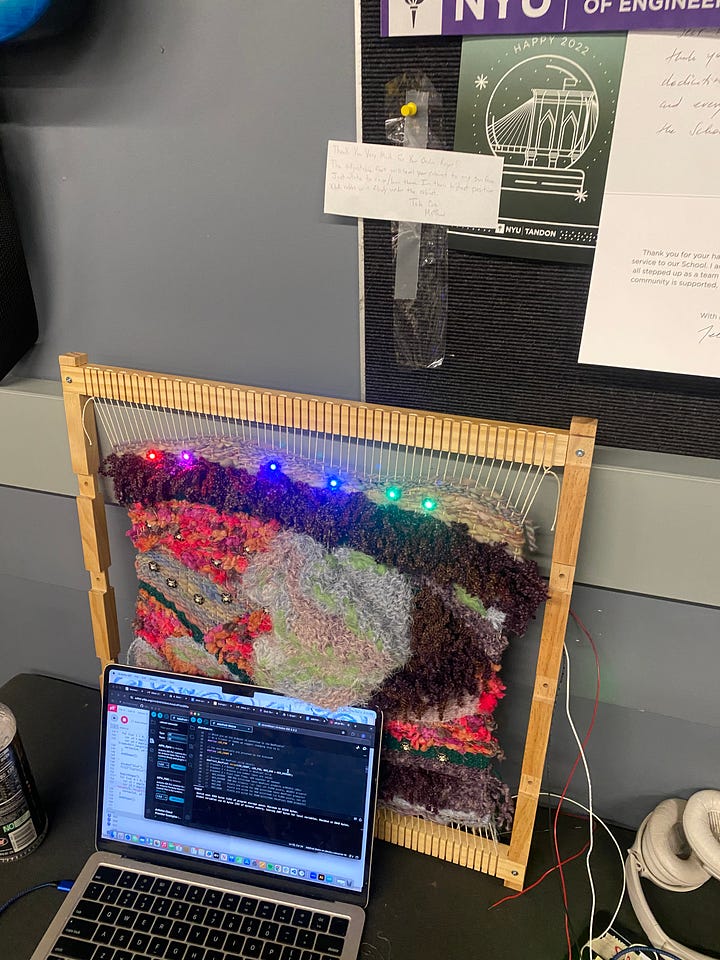final project - the illoominator

The Illoominator consists of two main components: a series of 16 photocells connected to a multiplexer that feeds into an Adafruit Metro Mini and a series of hand-connected neopixels that are each connected to a different signal pin on the Metro. The photocells each have their own input, whose resistance is measured and spit out into variables for each. A pair of photocells in one row controls one strip of lights: color and brightness. The photocell on the left controls brightness, and the photocell on the right controls the color using simple mapping. Long wires protrude from the back of the piece to connect the neopixel strips to power, ground, and their respective signal lines. 7 long wires connect the s0-s3, signal, power, and ground pins to the multiplexer, which is on a separate breadboard setup and is meant to be the more “front-end”, user-interactive aspect of the circuit. The user can flash their phone flashlight or wave their hand over the box that contains the photocells and see how their actions affect the colors on the loom.
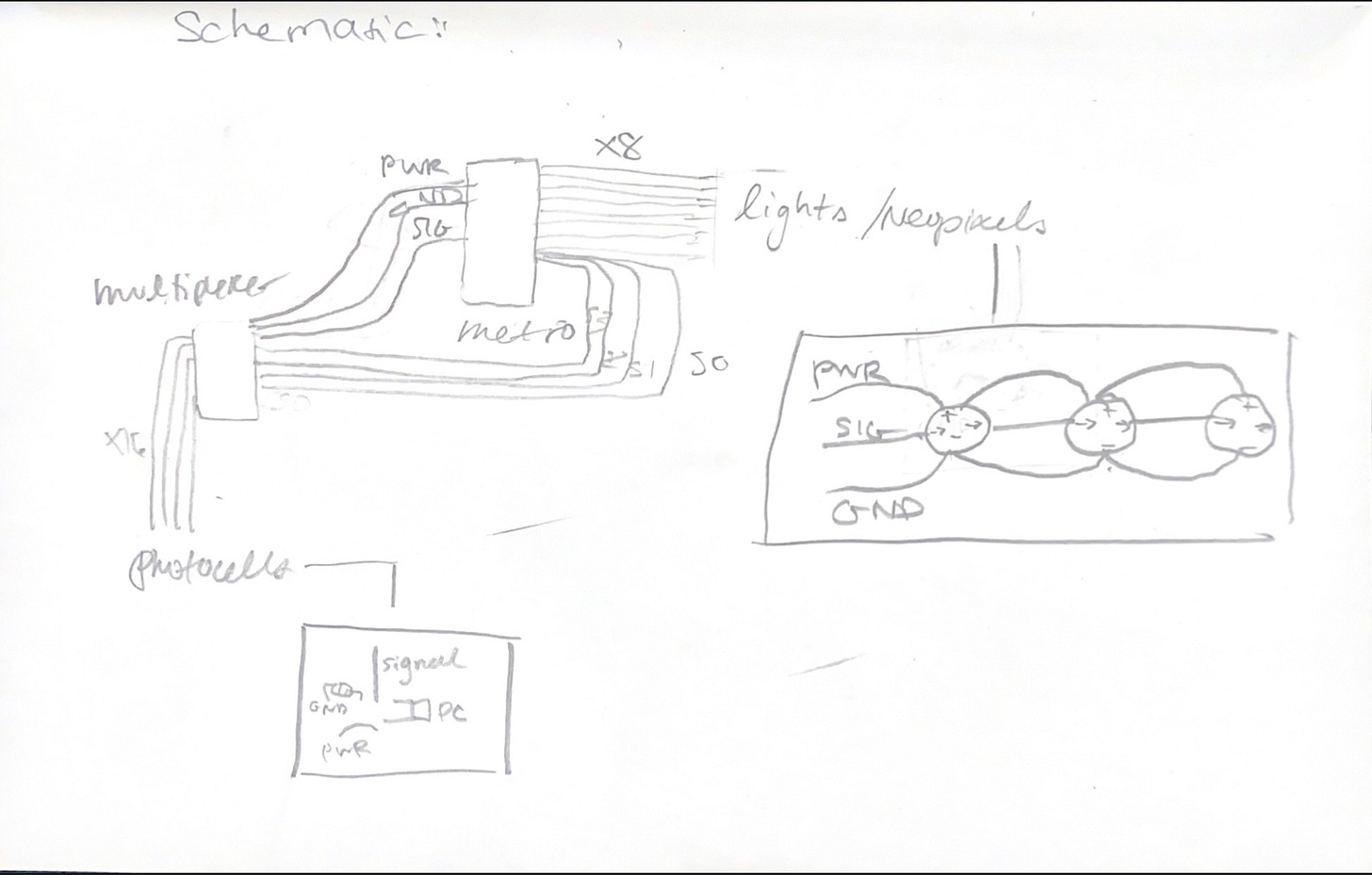
code file can be accessed here
I initially intended to make a Jacquard loom inspired art piece in which users could place “punch cards” on top of a series of photocells to control lights on a loom. Each row of photocells would control whether or not the lights were on or off, blinking or not blinking. I intended to sew lines of lights into the piece using conductive thread. As I created the project, I ran into a few issues; my first issue was that I repeatedly shorted my light circuits by accidentally crossing the power and ground threads. Not only did I lose hours of work from sewing in the lights, I also lost quite a few neopixels to burnout. My second challenge was with the photocells; they are quite finicky and it was virtually impossible to develop a working formula that could determine on versus off. My solution to these problems were to use solidcore wire, solder it to the lights, and attach the strips to the back of the piece where they would shine through. It ended up being a much more sturdy and safe solution. While it was a bit more messy in the back, I am happy with my solution and I have to say it might look better than it would have with the lights in front of the piece. For my photocell issue, I decided to make the experience a bit more interesting and instead map the values of each photocell to the brightness and color scheme of the trips. I also think that this solution looks and feels a lot more interesting than the initial idea I had. If I could do things differently, I would have prepared more for running into these issues and possibly done things to prevent them, like using different sensors or insulating the conductive thread better (however, the medium kind of prevents an efficient and effective use of conductive thread. I also think, if I had more time, I’d want to work on packaging up the interactive aspect a bit more into an even more fun form of interaction, like more movement or something. Even though the idea is different from what I initially envisioned, I still think this project is successful and I am very happy with the result!
